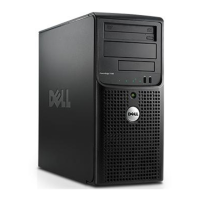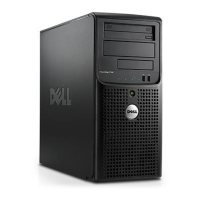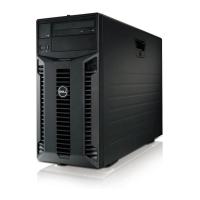138 Glossary
U-DIMM — An unregistered (unbuffered) DDR3 memory module.
uplink port — A port on a network hub or switch used to connect to other hubs or
switches without requiring a crossover cable.
UPS — Uninterruptible power supply. A battery-powered unit that automatically
supplies power to your system in the event of an electrical failure.
USB — Universal Serial Bus. A USB connector provides a single connection point for
multiple USB-compliant devices, such as mice and keyboards. USB devices can be
connected and disconnected while the system is running.
USB memory key — See memory key.
utility — A program used to manage system resources—memory, disk drives, or
printers, for example.
V — Volt(s).
VAC — Volt(s) alternating current.
VDC — Volt(s) direct current.
VGA — Video graphics array. VGA and SVGA are video standards for video adapters
with greater resolution and color display capabilities than previous standards.
video adapter — The logical circuitry that provides (in combination with the monitor)
your system’s video capabilities. A video adapter may be integrated into the system
board or may be an expansion card that plugs into an expansion slot.
video memory — Most VGA and SVGA video adapters include memory chips in
addition to your system’s RAM. The amount of video memory installed primarily
influences the number of colors that a program can display (with the appropriate video
drivers and monitor capabilities).
video resolution — Video resolution (800 x 600, for example) is expressed as the
number of pixels across by the number of pixels up and down. To display a program at
a specific graphics resolution, you must install the appropriate video drivers and your
monitor must support the resolution.
virtualization — The ability via software to share the resources of a single computer
across multiple environments. A single physical system may appear to the user as
multiple virtual systems able to host multiple operating systems.
W — Watt(s).
WH — Watt-hour(s).
XML — Extensible Markup Language. XML is a way to create common information
formats and to share both the format and the data on the World Wide Web, intranets,
and elsewhere.
ZIF — Zero insertion force.
Mayzie_HOM.book Page 138 Monday, August 31, 2009 9:33 PM

